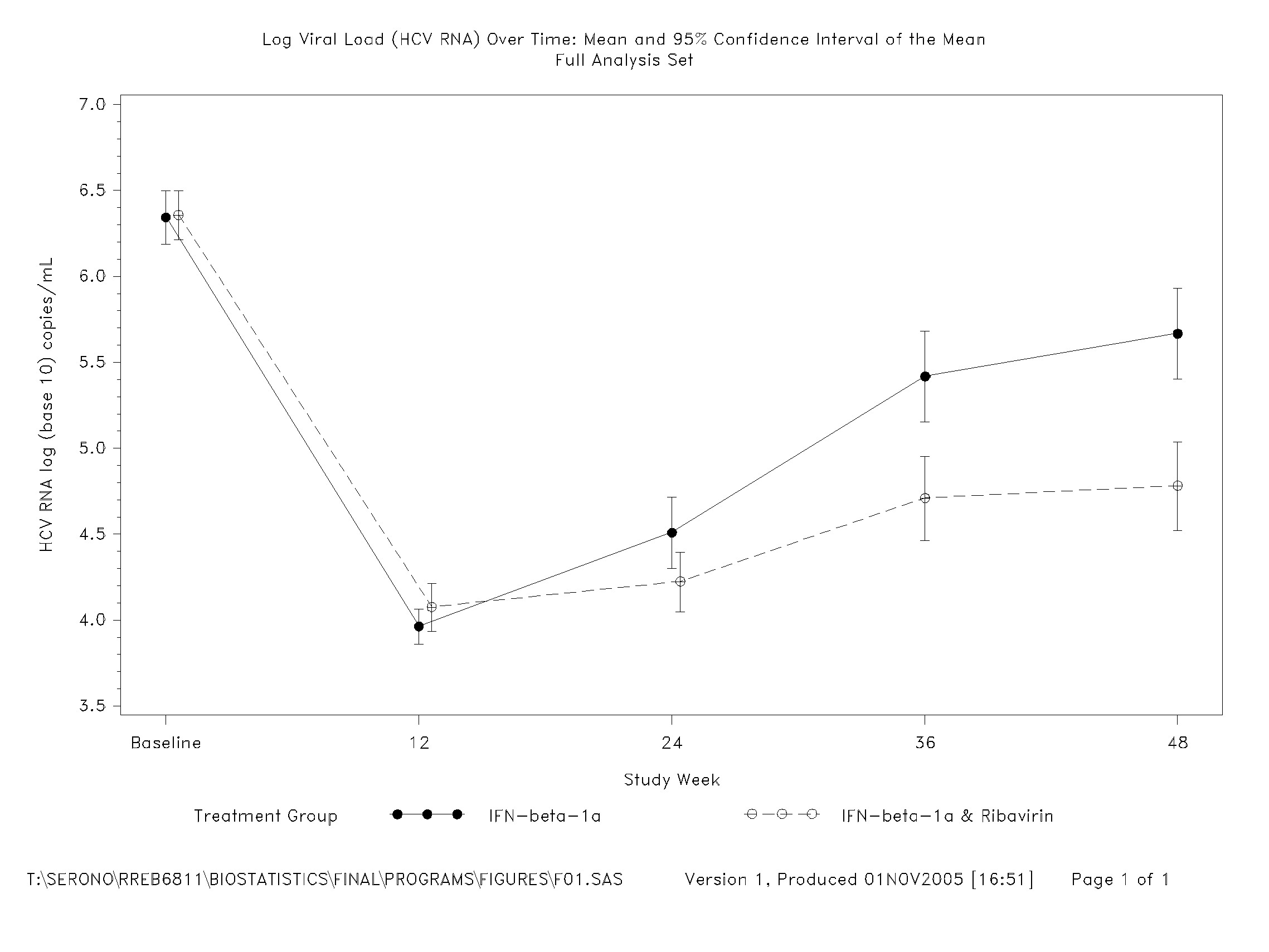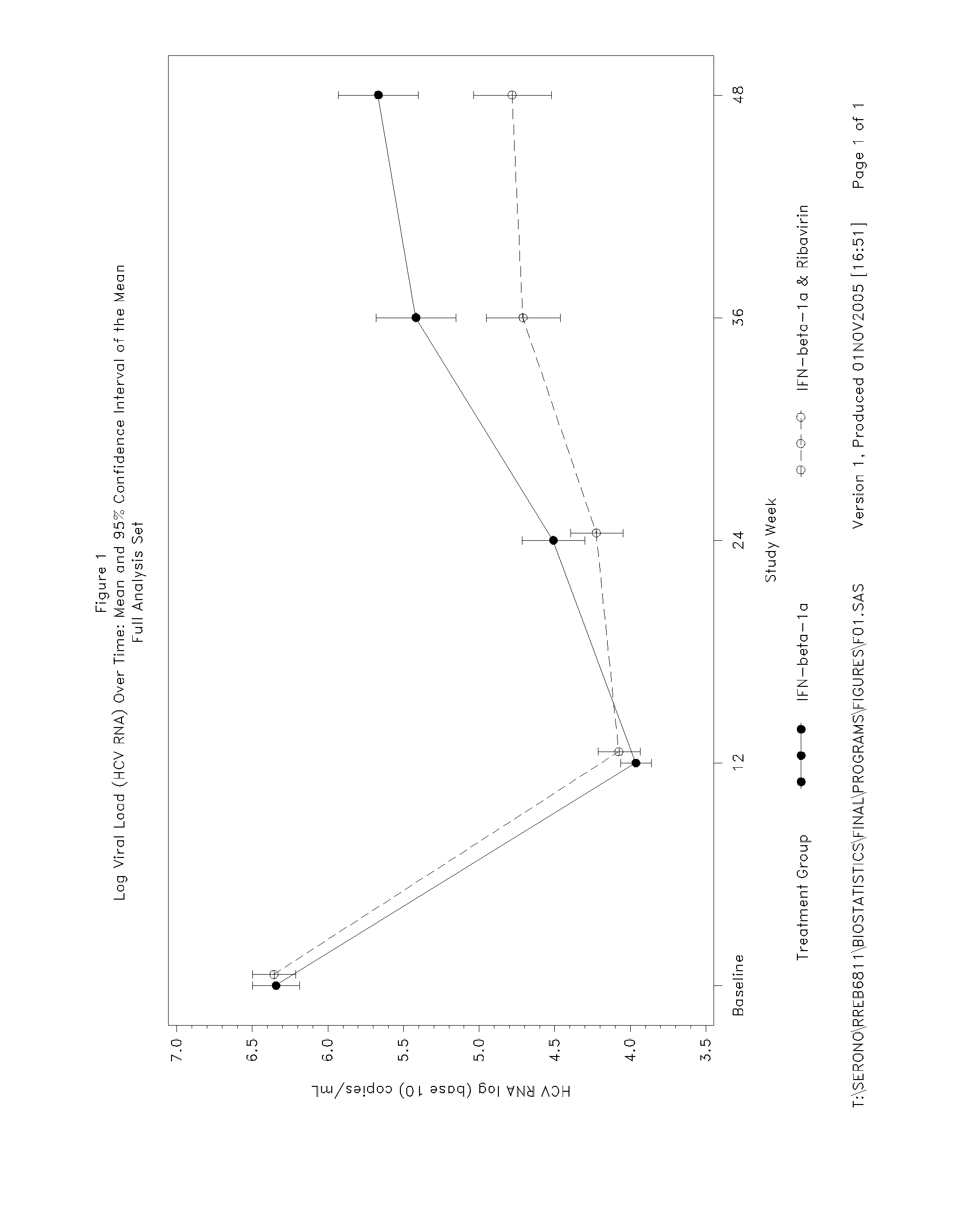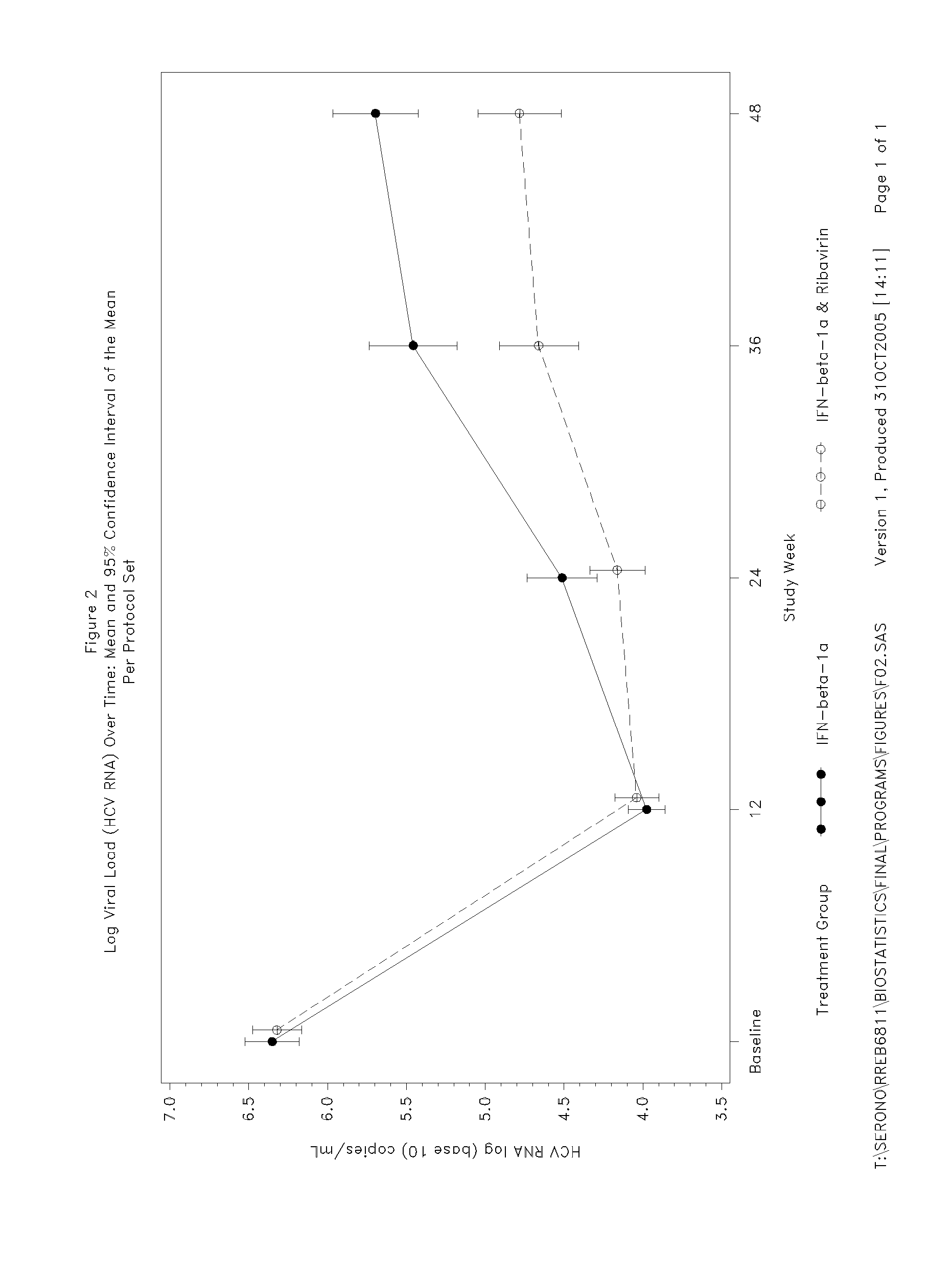Treatment Of Hepatitis C In The Asian Population With Interferon-Beta
a technology of interferon and hepatitis c, applied in the field of viral diseases, can solve the problems of affecting the development of vaccines, affecting the effectiveness of chronic treatment, and taking decades to appear
- Summary
- Abstract
- Description
- Claims
- Application Information
AI Technical Summary
Benefits of technology
Problems solved by technology
Method used
Image
Examples
examples of
production of amino acid substitutions in proteins which can be used for obtaining muteins of IFN-beta for use in the present invention include any known method steps, such as presented in U.S. Pat. Nos. 4,959,314, 4,588,585 and 4,737,462, to Mark et al; 5,116,943 to Koths et al., 4,965,195 to Namen et al; 4,879,111 to Chong et al; and 5,017,691 to Lee et al; and lysine substituted proteins presented in U.S. Pat. No. 4,904,584 (Shaw et al).
A special kind of interferon variant has been described recently. The so-called “consensus interferons” are non-naturally occurring variants of IFN (U.S. Pat. No. 6,013,253). Consensus interferons may also be used according to the invention.
[0057]“Functional derivatives” of IFN-beta as used herein covers derivatives which may be prepared from the functional groups which occur as side chains on the residues or the N- or C-terminal groups, by means known in the art, and are included in the invention as long as they remain pharmaceutically acceptab...
example 1
Early Virologic Response of Interferon-Beta-1a (Rebif®) Therapy in Asian Patients with Hepatitis C: 12 Weeks Results from a Multicentre, Randomized, Placebo-Controlled Trial
Objectives
[0113] The primary objective of the study was to evaluate and compare the effect of interferon-beta-1a to placebo on sustained virologic response (SVR) in Asian patients with IFN-alpha treatment-naïve chronic hepatitis C infection.
[0114] The main secondary objective of the study was to evaluate and compare the effect of interferon-beta-1a to interferon-beta-1a / ribavirin combination on SVR.
[0115] The other secondary objectives of the study were to evaluate and compare interferon-beta-1a to a) placebo and b) interferon-beta-1a / ribavirin combination for the effect of treatment on viral load and clearance, alanine aminotransferase (ALT) levels, liver histology, and the safety and tolerability of treatment, including haematological and biochemical parameters and the development of neutralizing antibodie...
example 2
Sustained Virologic Response of Interferon-Beta-1a (Rebif®) Therapy in Asian Patients with Hepatitis C: 24 and 48 Weeks Results from a Multicentre, Randomized, Placebo-Controlled Trial
Study Design and Materials and Methods:
[0155] The Study Design and the Materials And Methods employed are as in Example 1.
Results:
[0156] The Patient Demographics and the Baseline Disease Characteristics are as in Example 1.
[0157] Of the 128 subjects receiving interferon-beta-1a, 15 (11.7%) subjects withdrew before Week 48. All those subjects receiving placebo during the double-blind phase completed the first 12 weeks of the study. Two efficacy analysis populations were analysed: a Full Analysis Set and a Per Protocol Set. The Full Analysis Set was defined as all randomised and treated subjects (i.e. received at least one dose of study medication) who had at least one efficacy or safety value measured on treatment. Subjects who had missing viral load (HCV RNA) data at Week 12 were included in the...
PUM
| Property | Measurement | Unit |
|---|---|---|
| Volume | aaaaa | aaaaa |
| Fraction | aaaaa | aaaaa |
| Fraction | aaaaa | aaaaa |
Abstract
Description
Claims
Application Information
 Login to View More
Login to View More - R&D
- Intellectual Property
- Life Sciences
- Materials
- Tech Scout
- Unparalleled Data Quality
- Higher Quality Content
- 60% Fewer Hallucinations
Browse by: Latest US Patents, China's latest patents, Technical Efficacy Thesaurus, Application Domain, Technology Topic, Popular Technical Reports.
© 2025 PatSnap. All rights reserved.Legal|Privacy policy|Modern Slavery Act Transparency Statement|Sitemap|About US| Contact US: help@patsnap.com



